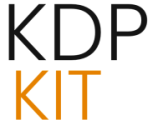
The Globalization Conundrum: AI Translation and the Access Gap
The realization that KDP solves the author’s gatekeeping problem but often exacerbates the reader’s access problem is a sobering discovery for any creator focused on impact. This inequality isn’t just about an author’s ability to publish; it concerns the reader’s structural ability to acquire that content, regardless of how low the author prices the unit.
Technological Leap: Kindle Translate Arrives in Beta
The final frontier for independent authors—language translation—is rapidly being addressed by platform evolution. We are now seeing the introduction of beta programs like Kindle Translate, an AI service aimed at streamlining the entry into non-English markets. Currently supporting translations between English and Spanish, and German to English, this tool promises fully formatted, translated ebooks within days.
However, this promise of automated global reach must be balanced against editorial prudence. If safeguards are insufficient, the marketplace risks being deluged by low-quality, machine-generated text, potentially cheapening the perception of the entire indie catalog. The *promise* of AI translation is frictionless expansion; the *reality* requires human oversight to maintain the quality that traditional publishing once guaranteed.
Infrastructure Deficits Limiting Global Digital Consumption
Even in the digital sphere, where geographical barriers seem to dissolve, a subtle, persistent form of exclusion remains. Setting an ebook price at a dollar or two does not guarantee access for a reader in certain developing regions. The limitation isn’t the dollar figure; it’s the underlying economic and technological prerequisites for the transaction.. Find out more about real economic challenges of KDP self-publishing.
Consider the prerequisites:
In environments where these prerequisites are unreliable or prohibitively expensive for the average citizen, the digital book remains effectively locked away. Technology alone cannot solve systemic socioeconomic disparity. Furthermore, the physical book—still the preferred format outside highly digitized economies—faces exponential inaccessibility costs. A \$15 U.S. paperback can easily double or triple in price when passing through international logistics, import duties, local distribution markups, and retail overheads, turning essential material into an unsupportable luxury.
The very global reach KDP advertises can, through the cold mechanics of global supply chains, ironically become a tool for quiet exclusion, prioritizing the convenience of the retailer over the ultimate reach of the content.. Find out more about real economic challenges of KDP self-publishing guide.
Mastering the Momentum Machine: Marketing in the Saturated Digital Shelf Space
The administrative freedom KDP grants is incomplete without an author’s corresponding mastery of modern marketing. The discovery mechanism has decisively shifted away from static Search Engine Optimization (SEO) tactics of old toward a dynamic, performance-based system that rewards immediate audience momentum.
Strategies for Visibility in the Noise of 2025
The market is no longer just crowded; it is choked with content, some of it low-effort or even algorithmically generated. Simply hitting ‘Publish’ is now the bare minimum. Success in 2025 demands meticulously planned launch sequences designed to engineer immediate sales velocity and secure those crucial early, positive reader reviews. This often means pre-launch efforts centered around targeted Amazon Advertising mastery to place the book in front of niche audiences already predisposed to your topic.
The metric of success is shifting. A title’s fate is increasingly determined by its initial reception, making the ability to convert early interest into tangible sales figures a non-negotiable skill for any self-publisher operating at scale.
Performance-Based Metrics Over Legacy SEO Reliance. Find out more about real economic challenges of KDP self-publishing tips.
The modern KDP discovery algorithm prioritizes what is currently working over what has historically held a good ranking. A book that sells robustly in its first few weeks signals relevance and quality to the system, boosting its organic placement across categories and keywords. This makes reliance on old tactics like keyword stuffing or simple back-matter linking obsolete.
Your focus must now be on sustained performance indicators:
This performance-centric approach elevates the absolute necessity of high-quality packaging—the cover and the description—because those are the first two things that dictate the conversion rate from a click to a purchase. They are your digital storefront window, and in 2025, they must perform.. Find out more about real economic challenges of KDP self-publishing strategies.
Contrasting Local Aspirations with Global Digital Reach
The decision to partner with a massive multinational like Amazon for distribution, rather than a local, culturally proximate entity—say, a small publisher in Kathmandu or Nairobi—is a deep negotiation between immediate, practical scalability and the nuanced desire to support a regional creative economy.
The Road Not Taken: Engaging with Domestic Houses
The initial exploration often involves local avenues. This path is frequently motivated by the hope of mentorship, deeper cultural resonance, and the belief that a local partner inherently understands the intended audience’s nuances. However, the reality of smaller, regional houses often involves systemic obstacles: slower production schedules, distribution networks that rarely breach national borders, and financial constraints that preclude investment in the high-quality editing and design services that an international platform can facilitate on demand.
The Trade-Off: Efficiency vs. Cultural Proximity
By choosing KDP, the author explicitly trades potential cultural alignment and familiarity for the sheer scale and operational efficiency of a global logistics powerhouse. The trade-off is brutally efficient: KDP manages the staggering logistical load of global digital file delivery, international tax compliance, comprehensive sales reporting, and dashboard maintenance—tasks that would instantly cripple an individual or small local firm. But in exchange for this infrastructural removal, the author receives zero personalized guidance or editorial safety nets.. Find out more about Real economic challenges of KDP self-publishing overview.
This choice confirms an acceptance of the digital marketplace’s inherently global, often impersonal, nature, accepting the burden of self-management in return for unparalleled, immediate worldwide reach. It is a pragmatic surrender to infrastructure over intimacy.
Synthesizing Pride, Vulnerability, and Systemic Awareness
The final synthesis of the publishing journey involves reconciling the deeply personal achievement with the structural critiques uncovered during the process. The author’s concluding sentiment is a complex weave of personal victory, acknowledged vulnerability, and an awakened understanding of the complex systems governing literary commerce today.
Honoring Completion Over an Illusion of Perfection
The ultimate reward, in this personal narrative, was not measured by first-week sales figures or external validation, but in the quiet triumph over self-imposed limitations. Publishing the work was, fundamentally, a mechanism to dismantle the internal voice preaching caution and delay. The act fulfilled a commitment to the self—a recognition that the pursuit of an often unattainable standard of perfection is merely procrastination dressed in academic robes. By embracing the inherent imperfections of a debut work, the author prioritized raw honesty and the fulfillment of the creative impulse, validating the identity of a writer who acts rather than merely contemplates.
The Ongoing Dialogue: Personal Triumph Meets Market Reality. Find out more about Navigating KDP Select exclusivity changes library distribution definition guide.
The completed journey leaves the author with a nuanced perspective, marked by profound pride in the individual accomplishment and a sober awareness of the external constraints that govern authorship worldwide. The joy of self-expression is now tempered by the structural realities of global access, the book’s nature as a highly leveraged commodity, and the constant technological turbulence within the sector.
This realization shapes all future endeavors: the next book will not just be a personal project; it will be a piece of content carefully engineered to navigate a powerful, indifferent global infrastructure. The story does not conclude with the final upload; it begins a continuous dialogue between the author’s desire to speak and the world’s capacity—or lack thereof—to listen and acquire that voice. The insights gleaned into the machinery behind the scenes—the distribution logistics, the volatile economics, and the critical platform shifts like the library distribution concession—provide a far richer context for what it means to participate in the literary landscape of the mid-twenty-first century.
Key Takeaways and Actionable Insights for the 2025 Self-Publisher
To thrive in this complex, high-stakes environment, you must stop viewing KDP as a passive distributor and start treating it like the high-performance, high-maintenance business engine it is. Here is what you must internalize and act upon:
- Know Your Royalty Thresholds: If you publish print, immediately audit every paperback and hardcover. If it sits below the regional list price threshold (e.g., \$9.99 USD), you are earning 50%, not 60%. Price strategically above that line, or accept the lower margin as a cost of accessibility for readers advanced royalty analysis.
- Audit KDP Select Exclusivity: If you are enrolled in KDP Select, immediately investigate compatible third-party aggregators (like D2D) to begin distributing your ebook to public libraries. This is a zero-cost expansion of your potential readership that requires your proactive management.
- Treat AI Translation as an Experiment, Not a Guarantee: The new Kindle Translate tool offers a low-barrier entry to new language markets. Use the beta to test market viability, but never skip the crucial human editing step. Quality control remains your sole defense against market devaluation.
- Prioritize Launch Velocity Over Static SEO: The algorithm rewards immediate sales performance. Build your email list before launch and plan a tight, aggressive launch window (7-14 days) focused on driving initial sales volume to signal relevance to Amazon’s system.
- The Cover Is Conversion: Given the intense performance focus of the discovery algorithms, your book cover and description are no longer mere marketing fluff—they are the direct determinants of your conversion rate. Invest here as you would in professional editing.
The author who succeeds in 2025 is the one who acts as both a creator and a critic of the very system they utilize. They generate the content, but they also understand the mechanics of distribution, the volatility of the economics, and the evolving technological shifts that govern whether their voice is heard above the noise.
What systemic friction point in KDP are you wrestling with most right now—the saturation, the print royalties, or the marketing treadmill? Share your biggest challenge below; let’s map out a strategy to conquer it.
For further reading on the technological shifts impacting independent creators, consult data on the growth of the self-publishing service market market growth projections.








